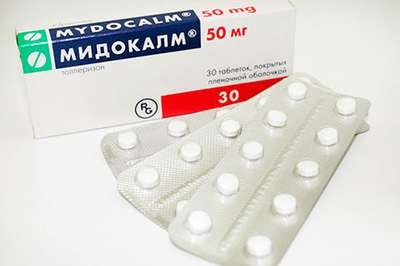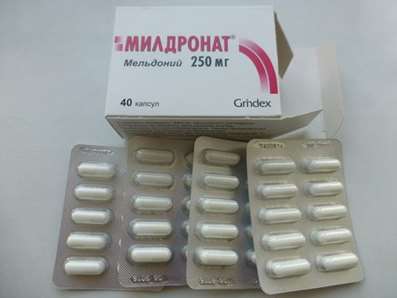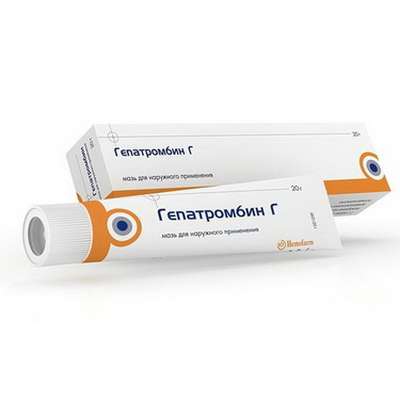Instruction to use: Hyoscine butylbromide (Hyoscini butylbromidum)
I want this, give me price
chemical name
[7 (S) - (1alpha, 2beta, 4-bet, 5alpha, 7beta)] - 9-Butyl-7- (3-hydroxy-1-oxo-2-phenylpropoxy) -9-methyl-3-oxa-9-azoniyatritsiklo [3.3.1.02,4] nonane bromide
Pharmacological group
Antispasmodic herbal [m-Cholinolytics]
The nosological classification (ICD-10)
K25 Gastric ulcer
Helicobacter pylori, Pain syndrome in gastric ulcer, Pain syndrome in gastric ulcer and duodenal ulcer, Inflammation of the gastric mucosa, Inflammation of the gastrointestinal mucosa, Benign gastric ulcer, The disease of the stomach and duodenum, asotsiirovannoe with Helicobacter pylori, Aggravation gastroduodenita on the background of peptic ulcer, Exacerbation of peptic ulcer, The aggravation of gastric ulcer, The organic gastrointestinal disease, Peptic ulcer of the stomach and duodenum, Postoperative gastric ulcer,Recurrent ulcers, Symptomatic gastric ulcers, Chronic inflammatory disease of the upper gastrointestinal tract, associated with Helicobacter pylori,Helicobacter pylori eradication, Erosive and ulcerative lesions of the stomach, Erosive lesions of the stomach, The erosion of the gastric mucosa, Peptic ulcer disease, Stomach ulcer, Gastric lesion,Ulcerative lesions of the stomach, Symptomatic ulcers of the stomach and duodenum
K26 Duodenal Ulcer
Pain with duodenal ulcer, Pain syndrome in gastric ulcer and duodenal ulcer, The disease of the stomach and duodenum, asotsiirovannoe with Helicobacter pylori, Exacerbation of peptic ulcer, The worsening of duodenal ulcer, Peptic ulcer of the stomach and duodenum, Relapse of duodenal ulcers, Symptomatic ulcers of the stomach and duodenum, Helicobacter pylori eradication, Erosive and ulcerative lesions of the duodenum, Erosive-ulcerative lesions of duodenal ulcers associated with Helicobacter pylori, Erosive lesions of the duodenum, Duodenal ulcer, Ulcerative lesions of the duodenum
K31.3 pilorospazme, not elsewhere classified
Spasm of smooth muscle in diseases of the digestive tract, Spasms of the digestive tract smooth muscle, stomach Cramps, Spasms of the pylorus, Spastic condition of the gastrointestinal tract, pilorospazme, pyloric spasm
K59.8.1 * intestines Dyskinesia
Pain smooth muscle spasm, Pain spasm of smooth muscles (renal and biliary colic, intestinal spasms, dysmenorrhea), Pain spasm of smooth muscles of internal organs, Pain spasm of smooth muscles of internal organs (kidney and biliary colic, intestinal spasms, dysmenorrhea), intestinal hypomotility, Hypotonic dyskinesia of the colon, GIT Dyskinesia, Dyskinesia gastrointestinal atony with events,colon Dyskinesia,Gastrointestinal spasm, Intestinal colic, Colic in infants, Spastic bowel dyskinesia, Spastic colon dyskinesia, Baby colic
K81 Cholecystitis
acute cholecystitis, chronic cholecystitis, Empyema of the gall bladder, holetsistopatii, Holetsistogepatit,Cholecystitis, obstructive cholecystitis
K82.8.0 * Dyskinesia of the gallbladder and biliary tract
Biliary obstruction, Biliary reflux gastritis, Biliary reflux esophagitis, biliary sludge, Pain smooth muscle spasm, Pain spasm of smooth muscles (renal and biliary colic, intestinal spasms, dysmenorrhea), Pain spasm of smooth muscles of internal organs, Pain spasm of smooth muscles of internal organs (kidney and biliary colic, intestinal spasms, dysmenorrhea), Gipermotornaya biliary dyskinesia, Hypokinesia of the gall bladder, Hypokinetic dyskinesia of the gallbladder, Biliary dyskinesia, Dyskinesia of the gallbladder,Dyskinesia of biliary tract, biliary colic, Bile reflux,Violation of bile secretion, Violation of the outflow of bile, Subacute and chronic diseases of the biliary tract, The spasm of the biliary tract, Biliary tract spasm, Spastic biliary dyskinesia, Spasmodic dyskinesia of the gallbladder, Spastic condition of the gastrointestinal tract
K94 * Diagnosis of gastrointestinal diseases
Liver-spleen scan is, The visualization of the liver using invasive methods, Isotope hepatoscintigram, Celiocentesis, examination of the liver, Magnetic resonance imaging of the liver, Computed tomography of the liver, Esophageal manometry, Anoscopy, Visualization of biliary tract, liver ultrasound visualization, Gastroscopy,degassing bowel before diagnostic studies, degassing intestine before X-rays, Diagnosis of the gastrointestinal tract, Diagnosis of bleeding from the small intestine, Diagnosis of focal lesions of the liver, Diagnosis secretory capacity and gastric acid-function, Diagnostic procedures on the colon, duodenal intubation, duodenoscopy, Instrumental examinations of the abdominal cavity, Intraoperative cholangiography, Irrigoscopy, The study of gastric secretion, GI study, Investigation of acid-forming function of the stomach, The study of gastric secretory function,Colonoscopy, Monitoring the effectiveness of lithotripsy, Determining the degree of hypersecretion of duodenal ulcer, Preparation for diagnostic tests, Preparing to X-ray and instrumental methods of investigation of the abdominal cavity, Preparing to X-ray and ultrasound of the abdominal cavity, Preparing to X-ray or endoscopic gastrointestinal investigations, Preparing to X-ray study of the gastrointestinal tract with contrast, Preparing to X-ray study of the gastrointestinal tract with barium, Preparing to X-ray examination and ultrasound of the abdomen, Preparing to X-ray examination and ultrasound of the abdomen, Preparation for ultrasound and X-ray examination of the abdominal cavity, Preparation for endoscopic examination of the lower large intestine,Preparation for endoscopic or X-ray examination of the lower intestine, Prepare to lower GI endoscopy, Preparation of the colon to the instrumental and radiological investigations, Preparation of the colon to the x-ray and endoscopy, sigmoidoscopy, rectoscopy, GI Radiography, X-ray diagnosis of esophageal achalasia,Radiology gastrointestinal diseases, Radiology of the digestive tract, Rentgenocontrast study biliary tract, Rentgenocontrast study GI, X-ray diagnosis of the gastrointestinal tract, X-ray gastrointestinal studies, X-ray examination of the duodenum and gall bladder, X-ray examination of the stomach, X-ray examination of the biliary tract and gall bladder, X-ray study of the gastrointestinal tract, X-ray examination of the esophagus, retrograde cholangiopancreatography, Endoscopic Retrograde pankreatoholangiorentgenografiya, Sonography of the digestive tract, hepatosplenography, Ultrasonography of the abdomen, Functional X-ray diagnostics for diseases of the stomach,Functional X-ray diagnosis with bowel diseases,cholangiography, Cholangiography in cholelithiasis, cholangiopancreatography, cholecystography,esophagoscopy, Endoscopic retrograde pancreato, Endoscopic retrograde cholangiopancreatography, Endoscopic intervention, Endoscopic examinations of the digestive system, Endoscopic examination of the lower large intestine, GI Endoscopy, endoscopy, ERCP, Panendoskopiya
N23 Renal colic unspecified
Pain in renal colic, Pain smooth muscle spasm, Pain spasm of smooth muscles (renal and biliary colic, intestinal spasms, dysmenorrhea), Pain spasm of smooth muscles of internal organs, Pain spasm of smooth muscles of internal organs (kidney and biliary colic, intestinal spasms, dysmenorrhea), renal Colic, ureteral colic, Renal colic, Renal colic with urolithiasis, Kidney disease,Spasm of smooth muscle in diseases of the urinary system, The spasm of the urinary tract, The spasm of the ureter, The spasm of the ureters, Spasms of the urinary tract, Spasms of the urinary tract
Unspecified N94.6 Dysmenorrhea
Pain during menstruationŠ Functional disorders of the menstrual cycle, Menstrual cramps, Emmeniopathy, Pain during menstruation, Painful menstrual irregularities, algomenorrhea, algomenoreya, Pain smooth muscle spasm, Pain spasm of smooth muscles (renal and biliary colic, intestinal spasms, dysmenorrhea), Pain spasm of smooth muscles of internal organs (kidney and biliary colic, intestinal spasms, dysmenorrhea), Disalgomenoreya, dysmenorrheal, Dysmenorrhea (essential) (Exfoliative), menstrual disorder, menstruation painful, metrorrhagia, Violation of the menstrual cycle, Menstrual irregularities, Prolaktinzavisimoe menstrual disorders, Prolaktinzavisimoe menstrual dysfunction, Pain spasm of smooth muscles of internal organs, Spasmodic dysmenorrheal, Primary disalgomenoreya
R10.4 Other and unspecified abdominal pain
Abdominal pain, Gastrointestinal spasm, intestinal colic, Colic in infants, The feeling of fullness, Resi abdominal, Spasm of smooth muscle in diseases of the digestive tract, The spasm of the biliary tract, Biliary tract spasm, enterospasm, Spasm of the digestive tract, Spasms of the digestive tract smooth muscle, stomach Cramps, gastrointestinal spasms, Spastic condition of the gastrointestinal tract,intestinal tenesmus, Feeling of fullness, Baby colic
Code CAS 149-64-4
Characteristics
Semi-synthetic derivative of hyoscyamine - an alkaloid contained in belladonna, henbane, datura, scopolia; quaternary ammonium compound. The white crystalline powder, readily soluble in water, soluble in alcohol. Molecular Weight - 440.38.
Pharmacology
antispasmodic, m-anticholinergic.
Does m-cholinergic receptors. Causes atropine effects: mydriasis, paralysis of accommodation, increased intraocular pressure, increased heart rate, acceleration sinoatrial and AV conduction, stimulating the automatism of the sinus node and AV node functional activity, relaxes the smooth muscles of the gastrointestinal tract, bile and urinary tract, uterus, bronchial tubes, slows peristalsis , reduces the secretion of excretory glands (salivary, mucous, sweat).
After ingestion is poorly absorbed from the gastrointestinal tract. Linking with low protein.
Indication
Spastic gastrointestinal condition, gall and urinary tract (renal colic, biliary colic, cholecystitis, intestinal colic, pilorospazm), spastic dyskinesia of the biliary tract and gall bladder, gastric ulcer and duodenal ulcer in the acute phase (composed of combination therapy), tuberculosis, endoscopic and functional diagnostic study of the digestive system (relaxation of smooth muscles).
Contraindications
Hypersensitivity (including to other belladonna alkaloids), angle-closure glaucoma, myasthenia gravis, megacolon, children under 6 years.
Restrictions apply
Suspected intestinal obstruction (including pyloric stenosis), obstruction of the urinary tract (including prostate adenoma), a tendency to tachyarrhythmias (including atrial tachyarrhythmia).
Pregnancy and breast-feeding
Perhaps if the expected effect of therapy outweighs the potential risk to the fetus or child.
Side effects
From the nervous system and sensory organs: drowsiness, amnesia, disturbance of accommodation, increased sensitivity of eyes to light, exacerbation of glaucoma.
From the digestive tract: dry mucous membranes of the mouth and throat, constipation, nausea and vomiting.
Allergic reactions: skin manifestations of anaphylaxis with episodes of shortness of breath.
Other: dry skin, redness, tachycardia, difficulty urinating, decreased sweating.
Interaction
Increases m-anticholinergic effect of tricyclic antidepressants (including amitriptyline, clomipramine, imipramine), the H1-antihistamines, quinidine, amantadine, disopyramide, other m-acting anticholinergics (including ipratropium bromide, tiotropium bromide). The combined use of hyoscine butylbromide and dopamine antagonists (e.g., metoclopramide) weakens the action of both drugs on the gastrointestinal tract. Hyoscine butylbromide increases the risk of tachycardia induced by beta-adrenergic agents.
Overdose
Symptoms: expansion of pupils and the lack of reaction to light, dryness of mucous membranes, hoarseness, difficulty swallowing, tachycardia, pyrexia, flushing of the skin, impaired consciousness, hallucinations, seizures, changing the oppression of the CNS, respiratory failure, bowel and bladder paresis.
Treatment: gastric lavage with activated charcoal and then with 15% magnesium sulfate, forced diuresis, repeated administration of physostigmine (every 0.5-1 hours), or galantamine (every 1-2 hours), to eliminate intestinal paresis and tachycardia, the introduction of neostigmine , excitation at moderate and severe convulsions - magnesium sulphate; in severe cases - sodium oxybate, oxygen therapy, mechanical ventilation; with difficult urination - bladder catheterization. Patients with glaucoma - instillation of pilocarpine, if necessary, possible systemic administration of cholinomimetics.
Precautions substance
It is necessary to take into account the significant differences in individual sensitivity to hyoscine, including possibility of excitation, hallucinations when taking conventional doses in selected patients. The risk of side effects increases in the elderly. Prohibited use of alcohol during treatment. Avoid overheating when performing intense exercise and in hot weather, as well as hot tubs and saunas. During the period of treatment is not suitable for vehicles driving and other activities requiring higher reaction speed. To reduce the dryness of the mouth, you can use sugar-free gum, small pieces of ice, saliva substitutes. Note that more than 2 weeks of continued dry mouth increases the risk of diseases of tooth enamel, gums, oral fungal infections. Cancel the drug should be carried out gradually (for quick cancellation may cause nausea, sweating, dizziness).

 Cart
Cart





